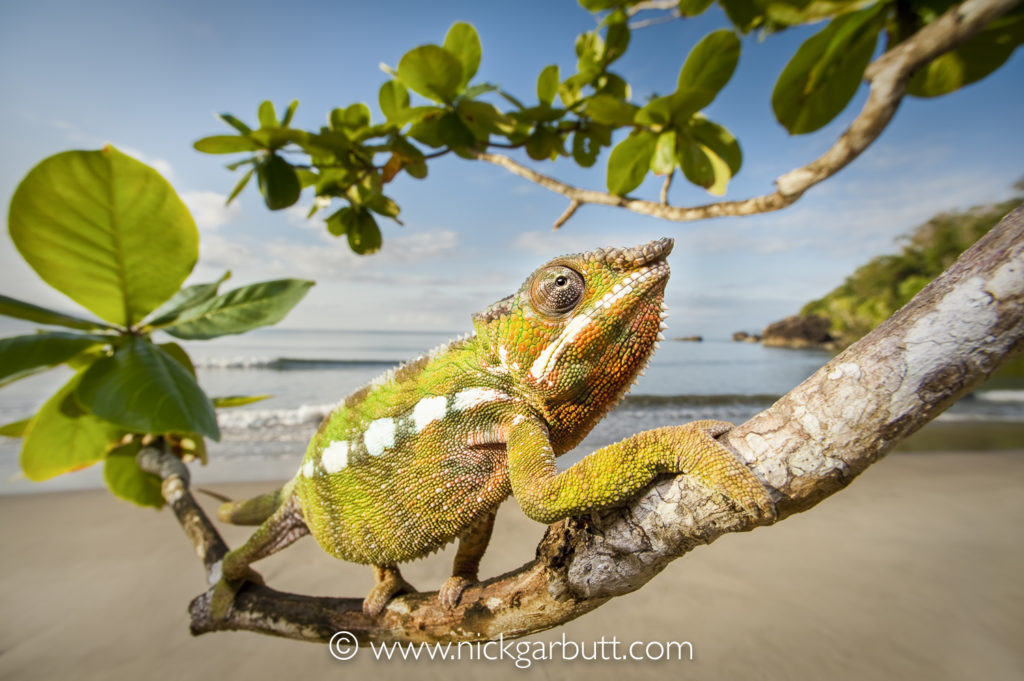Story Behind the Picture: Beach Bum Chameleon
Nikon D3, Nikon 14mm, f11, 125th second
Chameleons are one of the animal groups that help define Madagascar (the other major one being lemurs of course). But they are masters of concealment so finding them during the day is tough. It is actually easier to find them when they’re sleeping at night, but they are photographically far less interesting.
Whenever, I’m on foot and in forest habitats in particular, I try to find impactful ways of showing subjects in the context of their environment: there is little point in travelling to a rain forest in Madagascar and then taking photos that look like they might have been taken in captivity. This generally means using wide-angle lenses and getting in close, so
chameleons are ideal subjects in this regard.

A male panther chameleon: this is the sort of situation where wide angle lenses really come into their own.
This is a male panther chameleon, one of the most colourful species. It is a species is rarely found in the depths of intact forest, more often preferring forest edge and peripheral broken habitats. This particular individual was photographed in the beach front vegetation, backing onto pristine rainforest on the Masoala Peninsula in north east Madagascar.
It was very early morning so the sun was still only just above the horizon: hence the beautiful warm light. The chameleon was moving slowly along low lying branches and dipping in and out of shaded areas. I selected my widest regular lens, a fixed 14mm, and a medium aperture (f11) to give a reasonable depth of field, but all the time making sure the shutter speed did not drop and become too slow when blur and camera shake might become an issue. In the end this turned out to be 1/125th second. Just to make sure of balancing the exposure, I added a TTL-flash to pop in a trace of extra light to emphasise the chameleon and separate it from a slightly under-exposed background.
Composition is especially critical when using wide angle lenses: you need to be close enough to the subject so it dominates the foreground, while making sure all the background elements are complimentary and not distracting. Fine adjustments in camera position relative to the subject can have a massive impact on the composition and final result. One final compositional consideration with this image was to make sure the horizon was straight, as wonky sea behind the chameleon would look all wrong.
I took a large number of images in this sequence and in the majority, one or more elements were wrong: there were only a handful of pictures where all the factors came together properly and pleasingly.
